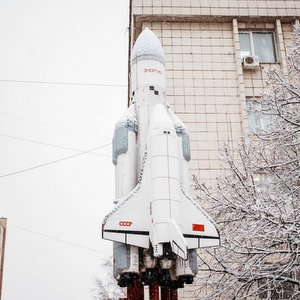Samara National Research University scientists are developing a system for automatic cooking in space. The automated "space chef" will help diversify the astronauts’ menu and make it more personalized. The solution is based on a multifunctional 3D food printer that is capable of working at zero gravity but can also be used on Earth. The ‘space chef’ prototype is expected to be made by the end of the year, whereas the test article – in 2023. The project is being implemented as part of the ‘Priority 2030’ federal strategic academic leadership program.
"The project suggests development of an automatic 3D food printer that will be able to autonomously prepare various dishes in zero gravity conditions based on pre-set recipes. Our solution will significantly diversify and personalize the astronauts' menu, which is especially important during long-term space expeditions," said Sergey Borminsky, Candidate of Technical Sciences, Scientific Director of the Analytical Devices and Systems R&D Laboratory at Samara University.
Currently, in-orbit food supplies of cosmonauts, astronauts, and taikonauts usually consist of standardized sets of specially prepared (freeze-dried) meals that look similar to Earth's instant soups and porridges that need to be simply diluted with hot water before eating. Notably, they don't eat out of tubes in space anymore; these are mostly used now to store various condiments, mustard, ketchup, liquid salt and pepper. Cans are another popular type of food storage in space.
The full list of meals that the Samara system will be able to cook has not yet been established, but, according to the developers, it will definitely include salads, pates, various pasta and chocolate products, cookies, sweets, thick and thin pancakes. The system will also be able to prepare dietary dishes with precisely defined calorific values, proteins, fats and carbohydrates, and a specific composition of certain vitamins and biologically active dietary supplements.
According to the project, the Samara University scientists are to develop the software to create recipes using the bank of ingredients available on board, and to control the process of cooking at all stages. The multi-extruder 3D printer should be able to automatically mix components in specified proportions, adjust the temperature of the incoming food mixture, peel vegetables and fruit, and chop solid foods to further feed them to a meal of choice at a specified location. The system will also be equipped with a refrigerated food storage compartment and an automatic ingredient handling system.
"3D food printing technologies have great prospects in space applications and beyond. A significant reduction in manual labor coupled with high recipe accuracy make the system very promising in terms of use in food industry, cafes, restaurants, and at home. The dimensions of the device in its basic household version will be standard for kitchen built-in appliances, such as electric ovens," Sergey Borminsky said.
According to the scientist, there are now more than a dozen manufacturers of food 3D printers in the world, but the market still lacks the universal devices for printing multicomponent meals. According to the open sources, the 3D food printing devices market could exceed $1 billion by 2027, and $10 billion by 2030 when these devices are expected to enter the home segment.
"The essential vacant niche at the moment is 3D printers with multicomponent printing and automatic feeding of ingredients from the storage system. Therefore, development of a multifunctional, fully automatic device could be a significant commercial breakthrough. We have already developed the preliminary design framework for the device. Before year end, the prototype is expected to be manufactured and tested, and next year, the test article," shared Sergey Borminsky.
For reference
The project is being implemented as part of the "Priority 2030" federal strategic academic leadership program under "2021–2030 Samara University Development Program".
According to the Samara University development strategy, by 2030 the university should become a digital entrepreneurial university developing according to the 3.0 model and as a socially responsible driver of the society.
The research activities will include shaping "greenfields" in artificial intelligence, bioengineering, "smart" agro, and IT medicine. The key element of the University development program until 2030 is the strategic project called "Space for Life", focusing on improvement of human living conditions through implementation of innovative space technologies.
 RU
RU  EN
EN  CN
CN  ES
ES 